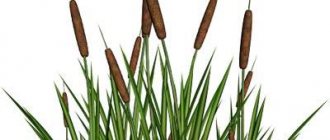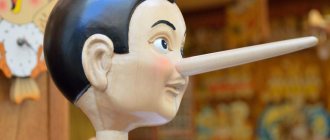Raincoat mushroom: description of the species
All representatives of the raincoat family are generalized into one species, which is fundamentally wrong.
The puffball genus of mushrooms represents a variety of types (Figure 1):
- Powder flasks or powder flasks - bovista;
- Golovachi - calvatia;
- Representatives of the same name - lycoperdon;
- False puffballs or scleroderma and many others.
Figure 1. Different types of puffball mushrooms
If we talk about what kind of puffball mushroom is, it is quite difficult to classify it; even avid mushroom pickers do not always navigate their system.
Mushrooms are:
- With growths and a smooth surface of the cap;
- Needle and warty;
- Spherical and pear-shaped;
- Similar to a pigeon egg;
- Some of them lie on the ground;
- Others have a false stalk.
All of them belong to the same group - nutrevicae or gasteromycetes, since their fruiting body remains intact until the period of spore maturation, after which their shell bursts and releases them out. According to the type of nutrition, puffball saprophytes grow on rotted organic matter. But despite this, they are considered a real delicacy and are collected from a young age, while they are filled with white elastic pulp (Figure 2).
Figure 2. White flesh of the edible Puffball mushroom and its poisonous counterpart (black inside)
Let's look at what a puffball mushroom looks like, photos and descriptions of edible species:
- Prickly, also known as needle-shaped, has pronounced conical needles; if you clear it of them, a barely noticeable mesh pattern will remain on the white or soft cream skin; you can safely put it in a basket while it is young and has a pleasant aroma; the fungus grows in small groups;
- Pearl - loves well-fertilized pastures, but is also found in forests from May to mid-November, the white pear-shaped fruit body becomes yellow as it matures, by the time the spores appear it has a gray-brown tint, the skin is also covered with small spines or growths, located predominantly in the upper part;
- Pear-shaped - a fairly small subspecies up to 5 cm in height, prefers rotting wood - fallen trunks and old stumps, looks like a white ball narrowed to the bottom with a short pseudopod on which thin threads of mycelium can be seen, it is often fried and boiled, used for making soups, although the degree of ripeness can only be determined in the kitchen, since the color does not always darken when ripe;
- The bighead is oblong or sac-shaped - it looks like a tall bladder inflated with air and pulled to the bottom, has more delicate and thin spines compared to the needle-shaped subspecies, it is eaten young and collected in pastures;
- Langermannia gigantea (Figure 3) - reaches enormous sizes up to 8 kg and 40 cm at the crossbar, but our largest specimens weigh about 1 kg and are approximately equal to an average head of cabbage, the skin is smooth and flaky, the color of the core changes as it ages - from white to cream to brown with green and dirty brown, the edible part is loose, similar in density to homemade cheese, as the fungus grows it becomes lighter, its mycelium is very durable, can live up to 25 years.
Figure 3. Langermannia gigantea
It is worth approaching the collection of these delicacies with all responsibility, since dangerous representatives of the species can easily be confused with those that can be put in your basket without fear.
Let's look at the question of how to distinguish from poisonous:
- Although the toxicity of scleroderma is not precisely indicated in scientific books, it all depends on the amount of fruit eaten, which can lead to poisoning;
- Some cooks ignore this fact and use the fungus as a seasoning to add flavor to dishes before its flesh turns black;
- False puffball has an unpleasant odor and grows in nests (Figure 4);
- The skin of the mushroom egg is quite dense with visible scales and warty growths, often there are visible cracks on it;
- The color varies from yellowish ocher to light olive with a marbled pattern and white veins;
- As they grow older, the middle darkens, changing color from gray-violet to almost black, while maintaining its density;
- Like its brother, the false species reproduces by spores escaping from under the dried shell. Figure 4. Accuracy of growth of Raincoat and False Raincoat
Application in medicine
The valuable properties of the giant raincoat are used in folk medicine. The mushroom has strong anti-inflammatory and strengthening properties, promotes the healing of damage and prevents the development of oncology.
To treat ailments, alcohol tinctures of raincoat and ointments based on its pulp are mainly used. Decoctions are not popular because heat treatment destroys most of the valuable substances in the mushroom.
With weakened immunity
The alcohol tincture of the giant raincoat has a stimulating effect, increases the body's defenses and replenishes the lack of vitamins. The medicine is prepared at home as follows:
- Cut the fresh flesh of the golovach into small pieces.
- Pour the raw material into a clean and dry glass jar without compacting it.
- Fill the mushroom pulp to the top with high-quality vodka or double-filtered moonshine.
- Close the jar hermetically and shake it thoroughly.
- Send it to a dark and cool place for a month, remembering to remove the vessel daily and shake the contents.
We recommend reading: The health benefits and harms of capuchin (nasturtium)
After the time has passed, the giant raincoat tincture is filtered from the sediment and poured into a clean container. You need to take the product twice a day, 10 ml in the morning and evening, about half an hour before meals.
Advice! The tincture can be used for cardiovascular diseases to improve rhythm and normalize blood pressure. But before starting therapy, you need to consult your doctor.
To strengthen the immune system, use raincoat tincture for ten days.
For wounds and bruises
The giant raincoat has hemostatic properties, disinfects injuries and promotes their rapid healing. For wounds, cuts and hematomas, it is recommended to use fresh mushroom pulp. Use it like this:
- A plate about 10 mm thick is cut from the fruiting body.
- Apply the pulp to the damaged area, and if necessary, pre-wash the cut.
- Fix a kind of compress with a bandage.
You need to keep the bandage with the pulp of the giant puffball for an hour. The procedure can be repeated up to five times a day.
For cough and sore throat
A tincture based on giant raincoat relieves inflammation and sore throat due to sore throat and bronchitis. Prepare the medicine according to the following recipe:
- About 100 g of dry spore powder from a mature giant puffball is poured into a glass container.
- Pour the raw material with 500 ml of vodka or diluted alcohol.
- Leave to infuse for three weeks in a cool, dark place.
- After the period has passed, filter the sediment through folded gauze.
The tincture should be consumed 15 ml up to three times a day on an empty stomach. For convenience, it is allowed to dilute the alcohol preparation in a small amount of water.
Raincoat mushroom dried 10 gr.
________________________________________________________________________
Indications for use of the Raincoat mushroom:
Recommended for: — During and after a course of deworming;
— During radiotherapy or chemotherapy; — Viral, chronic hepatitis, liver dysfunction, cirrhosis processes; — Diseases of the blood and lymph; — Diseases of the endocrine system, difficulty absorbing iodine; — Preventive treatment when living in areas with high background radiation, a polluted environment, working at chemical plants to prevent occupational diseases such as: sarcoidosis, fluororadiosis, and other exposures received; — Malignant tumors (cancer-sarcoma, melanoma, leukemia, etc.); — Benign tumors (pituitary adenoma, prostate adenoma, polyps, cysts, etc.). Main effects: — Removes radionuclides and heavy metals from the body; — Prevents radiation damage and reduces side effects during radiotherapy or chemotherapy; — Removes toxins after suffering helminthiases, hepatitis, dysbacteriosis, kidney diseases; — Relieves inflammatory processes in the body; — Improves skin condition: increases elasticity and firmness, gives the skin a matte tint; - Cleanses the whites of the eyes - gives them a bluish tint, dullness and yellowness disappear; — Has antitumor activity; - Increases immunity.
How often when picking mushrooms do we bypass the raincoat mushroom - and this is at best! Otherwise, as we walk around, we’ll give it a toe, and when it’s ripe, we’ll step on it so that “smoke” will go out. It is for this property that the puffball mushroom received an “additional” name – grandfather’s tobacco, and in some regions of Russia it is called wolf’s tobacco and fluff.
In addition to being edible, the puffball mushroom is also a wonderful healer for treating wounds. From the ancient healers came to us the knowledge of treating wounds with a raincoat. The white body of the young mushroom has strong hemostatic and wound-healing properties. The mushroom is cut and the inside, its pulp, is applied to the wound. The bleeding stops very quickly, and the wound heals quickly, without any suppuration. In the old days, barbers kept this vice powder in reserve.
Mushrooms have one unique feature that is not very pleasant for mushroom pickers - the ability to absorb heavy metals, radioactive substances, and toxic volatile compounds. Indeed, if a chemical plant is located somewhere, then the mushrooms in the forest nearby will have the entire range of those elements that the plant produces. But the most effective “cleaner” is…a raincoat. It simply has no equal in terms of cleaning power!
Doctors also became interested in this feature of mushrooms and conducted research. It turned out that mushroom powder behaves exactly the same way in the body: fungal cells suck in atoms of heavy metals and radionucleides, like a vacuum cleaner. Also, the raincoat removes toxins after suffering helminthiases (that is, worms), hepatitis, kidney diseases, dysbacteriosis, precisely when the skin and hair suffer.
In our online store “Russian Roots” you can buy a Mushroom Raincoat and consult on its use. Our managers will be happy to answer all your questions regarding our products, they will tell you where to buy a mushroom raincoat and how much it costs. A large assortment and excellent prices will pleasantly surprise you.
Various medicinal mushrooms can be bought at a pharmacy in Moscow or in our online store, or ordered by mail. You will learn about the benefits of the Raincoat mushroom, what it cures, and how it is taken by visiting the page of our website.
_________________________________________________________________________
Ingredients: Raincoat mushroom
__________________________________________________________________________
Method of preparation and use of the Raincoat mushroom:
1. Pour 0.5 g of Raincoat powder (4 scoops) into 200 ml. warm boiled water. Leave for 8 hours. Stir before use. Drink 1/3 glass 3 times a day for 20 minutes. before meals. 2. Pour 0.5 g of Raincoat powder (4 scoops) into 30 g of warm boiled water. Drink in the morning 1 hour before meals. The preventive course is 1 month (carried out 2 times a year), the therapeutic course is 3-4 months.
0.13 mg DOSING SPOON INCLUDED.
To improve the fermentation process and faster absorption of the mushroom, fungotherapists recommend that when taking the mushrooms, do not swallow them immediately, but hold them in your mouth for 2-3 minutes - this will speed up the process of the active substances entering the blood.
To enhance the therapeutic effect of mushrooms, it is recommended to use mushroom powders and
mushroom-based
suppositories This speeds up your metabolism. Since when administered rectally, the active substances of the fungus enter the vena cava, and, therefore, directly into the liver and blood. Reviews of Puffball mushroom indicate that the results of such treatment give remarkable results. You need to tune in to the treatment until you get the result and try not to interrupt the procedure. If you don’t know where to buy Raincoat mushroom in your region, contact our online store “Russian Roots”.
_________________________________________________________________________
Contraindications for the use of the Raincoat mushroom:
Not recommended for children under 12 years of age.
You can buy the Raincoat mushroom in our online store “Russian Roots”, or order it by mail.
The price of the Raincoat mushroom will pleasantly surprise you!
Weight: 10 g. Release form: dry water-soluble powder. Certificate: The Certificate of Conformity for the Raincoat mushroom can be found on the “Certificates” tab. Shelf life: 36 months. Store at room temperature no higher than 25°C, out of the reach of children.
Manufacturer: IP Limareva
Each buyer gets a catalog of mushrooms as a gift!
_________________________________________________________________________
Also, in our online store, you can purchase other types of medicinal mushrooms: - Agaric; — Veselka; — Hericium; — Cordyceps; — Chanterelle; - Poriya; - Morel; - Line; - Meitake; - Reishi; — Tramet; - Tinder fungus; - Shiitake; — Enoki.
Attention! All materials published on our website are protected by copyright. When re-publishing, attribution and a link to the original source are required.
Poisonous false puffballs
But in the family under consideration there are also inedible species, some of which are also mildly poisonous.
False raincoat warty
This mushroom belongs to the category of inedible mushrooms from the genus False puffballs of the Scleroderma family. It usually grows in “families” in deciduous forests and groves (especially on the edges or forest clearings), and is found in grass meadows and on roadsides. Growth period is from the first ten days of August to mid-October. The fruit body is 3–5 cm in diameter, tuberous in shape, the color of the outer shell is brownish. The outer shell is leathery, corky, leathery.
False raincoat warty
Common false raincoat
The fruiting body of this mushroom is tuberous in shape, 5–6 cm in diameter, the shell can be smooth or covered with small scales. The color of this raincoat is dirty yellow. When the shell cracks, small warts appear.
Description of edible species of puffball
Types of raincoats differ in appearance and place of growth. But they are united by fruiting from the second half of summer until October and the fact that they are all edible as long as the flesh remains white.
Meadow raincoat
It has a small fruiting body, the diameter of which is 2–4 cm. It is round, gradually tapering towards the base. The pulp of a young mushroom is snow-white, over time it becomes yellow and then brown or olive in color. It grows mainly in fields and along roads.
Raincoat pearl (spiky)
It has a spherical fruiting body growing on a thick stalk. Its surface is dotted with thin needles that fall off when touched. The height of the mushroom reaches up to 10 cm. You can find it on the edges or in a light forest.
Raincoat brown (umber)
It sits tightly on the soil because the leg is almost invisible. It has a small fruiting body (only up to 5 cm in diameter) of brown color, dotted with dark needles. They can form patterns that resemble stars.
Giant
The giant raincoat is different from all its relatives, often reaching the size of a soccer ball. True, this is a rare mushroom, and in the middle zone it is rarely found. Giant puffball grows in old pastures, fields or meadows; less often - in deciduous forests.
The benefits and harms of puffball mushroom
Many mushroom pickers don’t even realize the benefits of frequently eating puffballs. These tasty little mushrooms:
- help cleanse the body of toxins, which has a beneficial effect on the liver and kidneys;
- promote the removal of heavy metals;
- support immunity;
- are a prophylactic agent for the failure of the cardiovascular system.
Additional advantages of this product include its use in cosmetology. Factory-made creams and homemade masks are made from the pulp of puffballs to help tighten facial contours, reduce wrinkles, and get rid of oily shine.
Eating young puffball mushrooms has no negative consequences
The only thing worth paying attention to is that all mushrooms tend to absorb various substances from the environment. If a family wearing “white caps” grows up near a road or chemical production facility, then it is better to abandon them
Description of the pear-shaped raincoat.
The fruiting body is pear-shaped, while the “pseudopod” is very clearly expressed, but sometimes it is hidden in the moss, which is why the mushroom appears round. The diameter of the fruiting body in the thickened part is 3-7 centimeters, and the height reaches 4 centimeters.
The color of the fruiting body in youth is light, almost white, but as it grows, metamorphosis occurs and the mushroom becomes dirty brown. The surface of the mushroom is prickly at a young age, and later it becomes smooth; a large mesh often appears, with a hint of cracking of the skin. These mushrooms have a thick skin and with age they easily peel off like a boiled egg.
Mushroom pulp has a weak taste and unexpressed odor. The pulp of young specimens is cotton-like and white, but over time it becomes reddish-brown in color, and later it turns entirely into spores. The color of the spore powder is brown.
Reproduction of pear-shaped raincoat.
When the pear-shaped raincoat matures. Then, like other members of the family, the upper part opens, and spores are released from there. They scatter in the wind and germinate in a new place, which is how these mushrooms multiply.
Distribution areas of pear-shaped raincoats.
The pear-shaped raincoat is also collected from July to September. Fruiting occurs smoothly, without pronounced cyclicity. These mushrooms grow in groups, and they are dense and numerous. Pear-shaped puffballs settle on well-rotten woody remains; both coniferous and deciduous species are suitable for them.
Distinctive features of pear-shaped raincoats.
The distinct pseudopod and growth in large groups on rotting wood make it easy to distinguish this species from other members of the genus.
Types of raincoats
Edible varieties of puffball are:
- Pear-shaped. The mushroom is small in size: up to 5.5 cm in length and width. As the name suggests, the shape of the fruiting body of the puffball resembles a pear. The outer layer is white, with cracks or scales on the surface.
- Spiky. This variety of puffball mushroom has a hemispherical fruiting body. The false leg stands out noticeably. A tubercle rises on the upper part. It also has small spikes that are easily separated from the surface of the cap. While the mushroom is young, its skin is white. As it matures, it becomes gray-brown.
- Giant. This type of raincoat is characterized by a spherical shape. When the mushroom ripens, its shell cracks. The color of the giant raincoat is white or gray-yellow. It is large in size and reaches up to 50 cm in width. The weight of such a mushroom can reach up to 7 kg.
- Brown (umber). The puffball has the shape of a ball, its diameter is from 1 to 6 cm, and its height is up to 8 cm. When young, the mushroom is white in color, and as it matures it acquires brown tones. The cap of the brown raincoat has needle-like spikes.
Pear-shaped mushroom puffball
Spiny mushroom puffball
Giant mushroom puffball
Brown mushroom puffball
Also common are false puffballs, which are inedible. Unlike edible ones, false mushrooms of this type have a flattened round shape, gray or brownish color.
Medicinal properties of blackberries
Of all the known species of this mushroom, it is the lion's mane that is characterized by the maximum number of beneficial properties. It contains antioxidants, phosphorus, calcium, iron, vegetable proteins, polysaccharides and vitamins.
Eating blackberries has the following effects on the body:
- improves the functioning of the respiratory system;
- contributes to the successful fight against depression and increased excitability;
- has a therapeutic effect on the gastrointestinal tract;
- normalizes emotional state;
- smoothes the symptoms of Alzheimer's and Parkinson's diseases;
- reduces cholesterol levels;
- strengthens the body's defenses;
- normalizes metabolic processes;
- normalizes hematopoietic processes;
- prevents the occurrence of malignant tumors.
The presence of fatty acids, polysaccharides and phenols fight cancer cells similar to chemotherapy. As a result, the tumors resolve or decrease in size. Extracts obtained from the fungus are used in the production of means to combat fungal, viral and bacterial infections. In traditional medicine, ointments for skin diseases are made from it.
Is the puffball mushroom edible or not?
For some reason, many lovers of forest gifts avoid rain ones, despite their pleasant taste, vitamins and beneficial properties. And given the unpretentiousness in harvesting and in relation to weather conditions, the wide fruiting period, reasonable doubts arise.
Figure 5. Young (left) and old (right) puffball mushroom
Let's try to figure out whether the puffball mushroom is edible or not:
- The fruiting body ages quickly enough, which makes it unsuitable for collection, so old plants should not be collected (Figure 5);
- Yellowish or greenish flesh on the cut also indicates that you should not eat such a forest egg - it should be uniform, white and elastic;
- Only young specimens, their core, located under the skin, can be eaten.
Despite these simple rules, there is a certain risk that you will come across poisonous puffball mushrooms.
Poisonous ones can be distinguished by the following characteristics:
- A hard, leathery shell, under which white flesh can also be hidden if the fungus is young; when ripe, the filling is dark purple;
- Externally, the fruit is inconspicuous, yellowish in color, does not exceed 12 cm and does not have a false stalk, the surface is covered with cracks and brown scales;
- Classic symptoms of poisoning appear when consuming a large amount of a dubious delicacy; if you eat a small portion, a slight malaise is observed;
- An allergic reaction is possible - conjunctivitis and severe runny nose.
On our territory there are two subspecies of dangerous scleroderma - warty and common puffballs; they definitely cannot be eaten, even though they are recognized as mildly poisonous.
Share
- 60
30.08.2018 4 225
Where does it grow
Gladysh can be found in deciduous and mixed forests. It often grows under spruce, pine, and birch. Rarely found where there is little sunlight. The growing season begins in August. The mushroom is collected until October.
This species is demanding on soil moisture. Therefore, the fungus chooses places where the ground is covered with dense moss. It is found in swamps, fields, and among the grass in forest clearings. The smoothie loves alder thickets, which is why it is called alder. It prefers sandy loam, clay soils that are rich in lime.
Smoothie grows in groups. Its mycelium extends for several meters. Having found one instance, you should look around. Surely, you can collect a whole basket of milkweeds. Gladyshas are rarely affected by pests, which is good news.
Pear-shaped
Let's start the description with the key feature of the mushroom - it reaches 35 cm across. The cap is elongated, similar to the union of different pieces of pulp, separated from each other by depressions. Its color can be white, yellowish, gray, greenish. It can be smooth, ragged or furrowed.
With age, the rough skin of the cap comes off more and more easily. Under the skin there is a soft shell of a pale yellow color, turning gray over the years. The leg is invisible, but the mycelium is visible at the place of attachment to the ground. Fruiting lasts from July to September.
The pulp is used to stop bleeding, treat wounds and suppuration by applying fresh fibrous tissue to the sore spot. The raincoat is effective against frostbite and malignant formations. Alcohol tincture for oral use is used for leukemia. The mushroom is stored for a long time. Outside the refrigerator it is suitable for 24 hours.
The pear-shaped raincoat is found on a thick stalk with a regular round cap with a diameter of 5-10 cm. The upper skin is strewn with scales. The color ranges from pale yellow to gray-brown. When ripe, the mushroom bursts, leaving the lower part filled with fibers. It is held in place by a core that is clearly visible after the pulp has been broken. It turns black and thins, after which the wind tears it off and crumbles it.
Cooking for 5+
Boletus is a very tasty mushroom. With it you can prepare a huge number of different dishes that will become a real decoration for your table. Let's find out which of the most proven recipes we are talking about.
Marinated boletus
This is a great appetizer and a great addition to any dish. In order to marinate boletus, it must be properly prepared.
To begin with, it is washed very well in water. At the same time, foreign elements in the form of soil, plant particles, needles, and so on are removed.
Then the mushrooms are well dried.
If the mushrooms are large enough, it is recommended to leave them in cold water for several hours. If the mushrooms themselves are small and not yet completely ripe, then there is no need to soak them.
Then, the mushrooms are removed from the water and boiled in salted water for 10 minutes.
Catch the mushrooms and place them on a towel. Let them cool, then cut them into several pieces.
- For the recipe you will need 1 kg of mushrooms.
- 500 ml water.
- 100 ml vinegar.
- Several onions.
- 1 tablespoon sugar.
- Salt a few tablespoons.
- Bay leaf, cloves, pepper.
Then put a pot of water on the fire.
Add all the ingredients except mushrooms. Wait for the water to boil. Cook for about 15 minutes; if foam forms, remove it.
Place onions, mushrooms, and a few peppercorns in the jar. Everything is carefully poured into the marinade and rolled up with lids. The product can only be stored in the refrigerator.
Puffball mushroom soup: recipe with step-by-step description
To prepare 1.5 liters of hearty puffball mushroom soup, you need to prepare:
- 150-200 g of young mushrooms.
- 1 onion.
- 2 potatoes.
- 20-25 g butter.
- Dough for dumplings (recipe in description).
- Greenery.
- Spices.
Prepare the mushrooms, peel them and wash them.
Large specimens can be cut into slices. Peel the potatoes, add 1.5 liters of water and cook.
Prepare the dough for dumplings: boil 100 ml of water, add a pinch of salt and pour in 1 tablespoon of vegetable oil. Remove from heat. Add flour (about 100 g), and stirring continuously, brew the dough. Beat 1 egg into the still hot mixture and mix well.
Peel the onion and chop it. Fry it together with mushrooms. At the end of cooking, add butter to the pan.
When the potatoes are ready in the pan, add mushrooms and salt to them. Using a teaspoon, quickly fill the soup pot with dumplings.
Let them boil for 5 minutes, add finely chopped herbs and you can enjoy the wonderful mushroom aroma and rich taste of the soup.
Dangerous doubles and differences from edible mushrooms
Puffballs are representatives of the champignon genus. However, they differ from champignons in the absence of a stem. False puffballs are easy to distinguish from edible specimens if you know their description well.
Inedible puffball mushrooms from the champignon genus differ from edible fruits in color, shape and smell. The following types are distinguished:
- warty;
- ordinary;
- spotted.
Warty puffball
The false puffball is called warty because of its appearance, since the fruit looks as if it has warts on the surface. In shape and appearance, warty specimens resemble raw potatoes. In size they reach from 2 to 5 cm.
Young puffballs have dense, milky flesh with yellow veins, and when ripe the fruits darken. The mushroom turns yellow over time; if part of the fruit shell is damaged, it does not spray spores like edible specimens. Old mushrooms are distinguished by dirty olive or brown flesh, fruiting lasts a long time, so such puffballs are most often found in the autumn months.
The smell also depends on the age of the mushroom. Old copies smell sharp and unpleasant. However, young fruits are used in cooking as a seasoning for dishes. Although the warty species is not poisonous, when forest fruits are consumed in large quantities, the toxins in their composition cause stomach pain, nausea, and dizziness.
Common puffball
In the scientific world, this species is called Scleroderma aurantium. However, common puffballs have many popular names: false, lemon, orange, etc. The mushroom is characterized by a fruiting body of about 6 cm. However, larger specimens can often be found. The body is egg-shaped, the leg is missing.
Many encyclopedias on relevant topics provide a detailed description of the false puffball, how to distinguish the mushroom from other dangerous gifts of the forest, whether it can be eaten, etc. By the surface of the mushroom, you can easily distinguish the common false puffball from other inedible species. It is brown or light brown in color. The body of such mushrooms is covered with dark scales. Over time, the upper part of the fruiting body cracks and the cut becomes red. The pulp of young fruits is yellowish. When the spores mature, they turn dark purple.
The common puffball and the common puffball share the unpleasant smell of raw potatoes. The common species also causes stomach upset when eaten. And also these specimens can cause allergic reactions if they come into contact with the mucous membrane. The common puffball is a bit like the edible spiky species. However, the presence of light, dense pulp with a white skin of the fruiting body, as well as a large spike that has a brown tint, are the distinctive features of an edible specimen.
Spotted puffball mushroom
The spotted puffball is also called scleroderma leopardum for its characteristic color. We advise you to carefully read the photo and description of this spotted species. The surface of the forest fruit is covered with small brown spots. Its diameter rarely exceeds 5 cm. Young specimens are white or light yellow, but over time they darken and become yellow-brown. The smell is weak, sweet, no legs.
Like other false puffballs, the flesh of young fruits of the spotted species is white. In mature specimens it darkens and turns purple. Sometimes you can find puffballs with black flesh. These are old copies.
What does the bighead mushroom look like and where does it grow?
The golovach, or giant puffball (Calvatia gigantea), is a mushroom of the Champignon family, also known as giant powder, giant Langermannia or Bovista gigantea. It has an ovoid or club-shaped shape, can reach 35-50 cm in diameter, and 10-25 kg in weight.
The leg of the giant raincoat is thick, cylindrical, with a thickening at the top. Almost completely hidden by a huge cap with a smooth or bumpy surface. The top of a young bighead is white, but with age it becomes yellowish or brown and cracks. After this, a spore mass of an olive or dark brown hue comes out.
The flesh of a young raincoat is snow-white, dense, but not hard, with a pleasant aroma. As the mushroom ages, it becomes loose and cotton-like, turns yellow, and then acquires a greenish color. Only young and fresh puffballs can be eaten.
The giant bighead is listed in the Red Book in Tatarstan and Altai
The edible mushroom is distributed throughout Russia in temperate climates. Most often it can be seen in Siberia, the Far East and Karelia. The giant raincoat prefers fields, meadows, as well as deciduous and mixed forests, usually grows alone, and is very rarely found in groups. It almost never appears in the same place, which is why it is also called the “meteor mushroom”. The period of maximum fruiting occurs at the end of August, but in general you can meet the giant raincoat from the beginning of summer until frost.
Properties of puffball mushrooms
Mushroom pickers classify these mushrooms as a separate category. When cooked and directly consumed at a young age, they give off a woody taste and have a pleasant aftertaste.
To prepare, you do not need to perform additional steps, that is, you do not have to boil or soak them. This is a trait that mushrooms of noble origin have in common.
Fried mushrooms are best for consumption; if you use them as an addition to soup, they will acquire the consistency of rubber.
Note! When cooking these mushrooms, do not wash them. Just clean with clean hands
If the mushroom loses its white flesh, it becomes unsuitable for further consumption. Therefore, it is necessary to try to collect and prepare such mushrooms as quickly as possible.
In addition to their taste characteristics, raincoats are characterized by their healing properties. They promote rapid healing of wounds and restore blood. Therefore, the mushroom is often compared with plantain for similar properties.
Another use of the mushroom is to use it to treat burns, or purulent, ulcerative wounds. Dermatological diseases, such as acne, smallpox, or urticaria, disappear thanks to the correct and competent use of this mushroom.
Often, white, young puffball mushroom, as seen in the photo, is used as an additive in soups and in the preparation of special decoctions. In an integrated approach, this helps fight tuberculosis and colds. Surprisingly, this mushroom helps in the fight against tumors of various types.
Often, for timely use, it is worth considering preparing mushrooms as medicine in advance.
Methods of using mushrooms in cooking
Young puffballs collected in uncontaminated areas can be eaten. These mushrooms can be fried, stewed, baked, pickled and salted, and also added to various dishes.
A young raincoat does not require pre-cooking: if you do this, the cooking time with it will only be delayed. To prepare the raincoats, just peel them and cut the flesh into pieces of the desired size. The following dishes can be prepared from these mushrooms:
- Roasting. Prepared mushrooms should be rolled in flour and lightly salted, and fried in vegetable oil until tender. To make the dish more original, you can add sauce to it. To prepare it, you need to take 2 bell peppers, chop them finely, add chopped capers, pickled cucumbers and green onions. Add mayonnaise, fresh lemon juice and a little soy sauce.
- Dried mushrooms. Peel the mushrooms, remove the hard skin. Cut into several pieces if the mushrooms are large. Raincoats should be dried by laying them out in the sun. They can also be dried in the oven or over the stove, strung on threads. Use dried mushrooms as additives. The soup works especially well with dry puffballs.
- Mushrooms in sour cream. To prepare a dish with a delicate taste, you need to take 500 g of young raincoats, 200 g of sour cream, 300 g of potatoes and 2 onions. Potatoes need to be peeled and boiled in salted water. Wash and peel the mushrooms, fry in oil for 25 minutes. Peel and chop the onion, fry separately. Combine mushrooms and onions, add salt and ground black pepper, fry for another 15 minutes. Add sour cream 5 minutes before the mushrooms are ready. Mix everything thoroughly again and let the ingredients simmer over low heat.
The collected raincoats need to be prepared as soon as possible - they, like other types of mushrooms, are not easy to keep.
Description
Gladysh belongs to the Syroezhkov family. It also has other names:
- common milkweed;
- common smoothie;
- Gladyr.
In some areas it is called bitterweed, alder and lubyanka.
In appearance, the smoothie is practically no different from other milkweeds. His signs are similar:
- A small cap with a smooth surface. Its diameter reaches twenty centimeters. Its outer surface is light in color; in more mature mushrooms it is purple. At first the cap is convex, but over time it becomes flatter. Sometimes there are stripes or spots around the circle. The lower area is covered with thin plates that press tightly against each other and change their color as the smoothie grows older - from yellow to reddish.
- The grayish-yellow leg is up to three centimeters thick and four to eight centimeters long. In young specimens there is a neat cavity in it, which expands with age.
- The milky juice is white, and in air it becomes grayish with a green tint.
- The pulp is white and brittle.
- The spore powder is light yellow.
- The plates are thin - from white to pink.
A distinctive feature of smoothie is its herring smell. It is produced by the milky juice on the cut of the pulp.
Edible varieties
There are about 50 species of mushrooms in this family. Among them there are also inedible individuals; they are not dangerous to health, but are unpleasant to the taste and difficult to digest. Let's look at the most common types of edible raincoats that are found in forests.
Pear-shaped
Looks like a soft balloon. Its leg is not visible; the cap is up to 7 cm in diameter. When touched, adult mushrooms begin to crack, and when pressed, spores fly out. In this state, they are unsuitable for food, but young specimens with white flesh on the cut are often collected for consumption. They grow in coniferous and deciduous forests.
Hedgehog-prickly
There are spines on the entire surface of the pear-shaped body. They are close to each other, seem sharp, but in fact they fall off easily when touched. Beneath these needles is smooth skin. Young mushrooms have white flesh, while older mushrooms have green or brown flesh.
Yellow-colored
It is easy to spot in the forest due to its rich color. Young fruits have a more saturated bright shade and a rough surface. When cut, longitudinal white fibers are visible. Sometimes there are raincoats not only yellow, but also beige. In Russia, this mushroom is considered rare, but it is periodically found in deciduous forests.
Ragged
It grows up to 6 cm in height, has a noticeable short stem and a wide cap. There are spots on it that look like pieces of soft material. Young individuals have only a white cap, and the flesh is milky or chocolate in color. Raincoats with a light cut are suitable for use.
Giant
The spherical shape of the fruit has a smooth surface. The leg is not visible, the cap is white. This raincoat sometimes grows to the size of a pumpkin, making it easy to spot in the forest.
Lugovoy
Reaches up to 6 cm in diameter, it has a rounded white cap. The pulp of the puffball resembles cotton wool; it is found only on lands with a large amount of humus.
Useful properties of raincoats
If you apply a raincoat to a cut, you can disinfect the wound, stop bleeding and speed up the scarring process as much as possible. At the same time, it also acts as a pain reliever. In addition, the mushroom has a number of other beneficial qualities.
The raincoat contains calvacin, which is not only effective in fighting bacteria, but also has anti-cancer properties. In particular, compresses made from puffball pulp are used to treat malignant wounds caused by cancer. The fruiting bodies of the puffball are used to excrete:
- heavy metals;
- radionuclides;
- toxic compounds;
- toxins formed as a result of kidney inflammation, dysbacteriosis, hepatitis, etc.
Pharmacological preparations used in the treatment of:
- bronchial asthma;
- pneumonia;
- tuberculosis;
- adrenal dysfunction;
- diabetes;
- goiter;
- lymphatic system and other diseases.
Broths and infusions are made from young puffball fruiting bodies. Back in the Middle Ages, patients were given broth from raincoats, believing that it was useful for almost any disease. It has now been scientifically proven that raincoat broth is effective in treating:
- hypertension;
- angina pectoris;
- leukemia;
- malignant tumors;
- gastrointestinal diseases;
- kidney diseases;
- tonsillitis.
Decoctions are also used for:
- strengthening the immune system;
- blood thinning;
- as an antipyretic.
Raincoats have also earned a good reputation among cosmetologists. Currently, masks and even creams are made using them: thanks to them, the skin restores elasticity, tone, becomes smoother and acquires a matte tint. Pores become smaller and blackheads disappear. Since raincoats absorb toxins in the body and remove them from the body, they indirectly affect eye color by making the whites clearer.
Raincoats: contraindications
These mushrooms have practically no contraindications. The only exceptions are pregnant women and nursing mothers
People with weak stomachs should also be careful because puffballs, like other mushrooms, are difficult to digest foods
Raincoats in cooking
For their taste, many types of raincoats are highly appreciated by gourmets. The nutritional qualities of puffballs are no lower than those of porcini mushrooms. By the way, just as in the case of the latter, neither drying nor heat treatment has any effect on the beautiful white color of the raincoat.
The most delicious are pearl ones, or as they are also called spiky raincoats. Also have a good reputation:
- umber (brown) raincoat;
- pear-shaped raincoat;
- meadow raincoat;
- a real raincoat.











